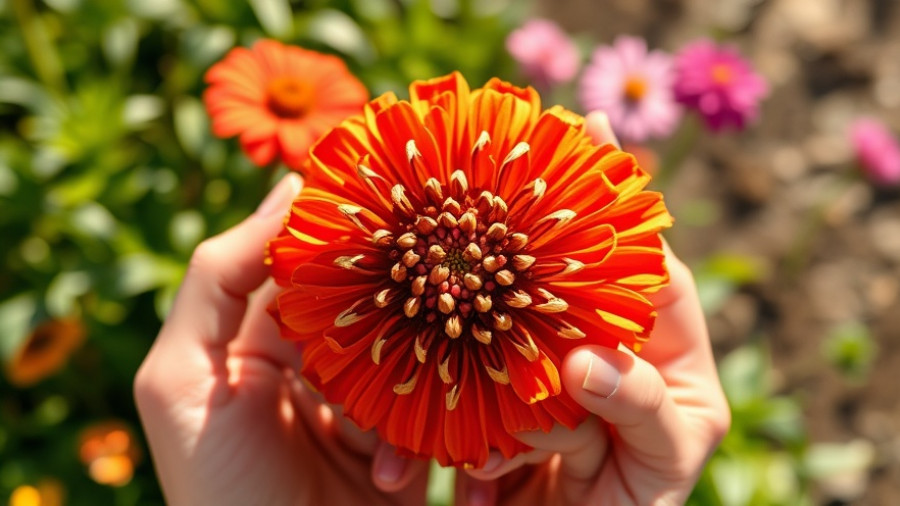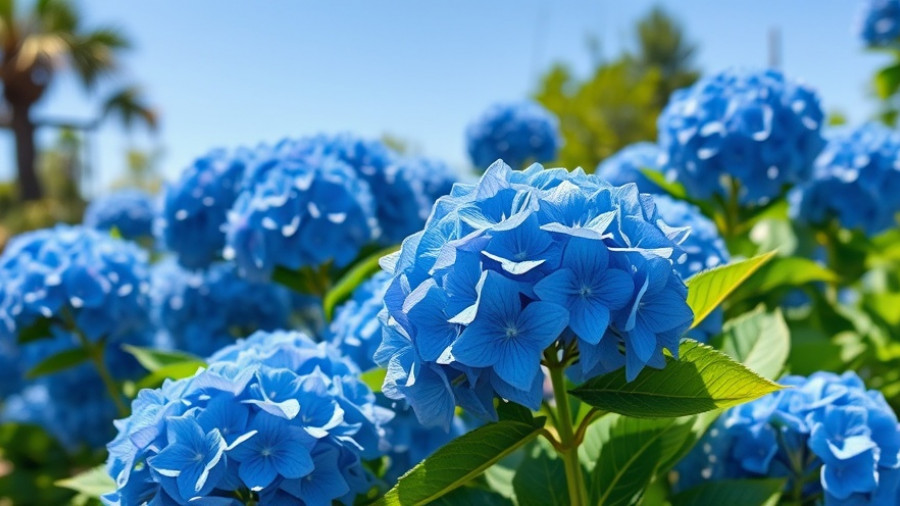
Understanding Powdery Mildew: A Gardener's Challenge
For outdoor living enthusiasts and gardening lovers, there are few sights more disappointing than realizing your beloved bee balm has fallen victim to the dreaded powdery mildew (PM). This white, fuzzy ailment can sweep through gardens during the humid days of late summer, wreaking havoc on even the most vibrant plants. The good news? Despite its intimidating appearance, tackling powdery mildew effectively is possible with proactive strategies and effective treatments.
The Importance of Preventative Measures
Prevention should always be the first line of defense against powdery mildew. As you embark on a backyard makeover this season, consider selecting resistant bee balm varieties that are less prone to PM. Varieties such as the Lambada Bee Balm and Wild Bergamot not only add vibrant colors to your landscape but also stand strong against this disease. Integrating these hardy plants into your flower bed layout can significantly reduce your chances of encountering troubling mildew.
Simple Strategies to Banish Mildew
Should PM find its way onto your bee balm, fear not! There are multiple ways to combat this fungal foe. First, you can remove the infected leaves at the first sign of powdery spots. As the saying goes, 'A stitch in time saves nine.' Trim those infected parts away, ensuring that they don’t spread further through your garden.
Utilizing Horticultural Oils
Applying a horticultural oil can drastically limit the spread of PM. However, it's crucial to time your applications properly to protect pollinators. Spraying in the morning or afternoon when bees are less active can keep your beneficial garden buddies safe. Remember, when spraying any treatment, cover both the upper and lower sides of leaves and stems to ensure thorough protection.
Baking Soda Solution
Another popular option is a homemade baking soda solution. By mixing 1.5 tablespoons of baking soda with a gallon of water, you create a simple remedy that can be sprayed weekly to thwart the spread of PM. While this treatment won’t eliminate existing mildew, it acts as a barrier to prevent new spores from developing, keeping your garden healthier in the long run.
Enhancing Your Garden’s Resilience
In addition to these treatments, focusing on cultural practices can greatly enhance your garden’s resilience against diseases like PM. Good air circulation is crucial, so space out your plants accordingly. This allows for proper airflow around the leaves, which helps to keep them dry and less susceptible to fungal infections. Furthermore, ensure you’re practicing proper watering techniques—avoid overhead watering and instead go for soaker hoses to keep moisture levels down around the foliage.
Connecting with Your Gardening Community
As you work to create a garden space that flourishes and thrives, remember that gardening often builds community. Share your stories and strategies for managing powdery mildew with fellow outdoor enthusiasts. Your battles and successes can inspire others in your neighborhood, strengthening bonds as you collectively strive for greener backyards. Consider hosting a local garden club meeting or gathering friends for a hands-on gardening day dedicated to tackling PM and creating sustainable outdoor living spaces.
Lastly, keep in mind that the journey of gardening is just as important as its outcomes. Through the highs and lows—including pest challenges like powdery mildew—you'll not only cultivate your garden but also enrich your personal growth. As you refine your knowledge through experience, expect your outdoor space to reflect that labor of love.
 Add Row
Add Row  Add
Add 




Write A Comment